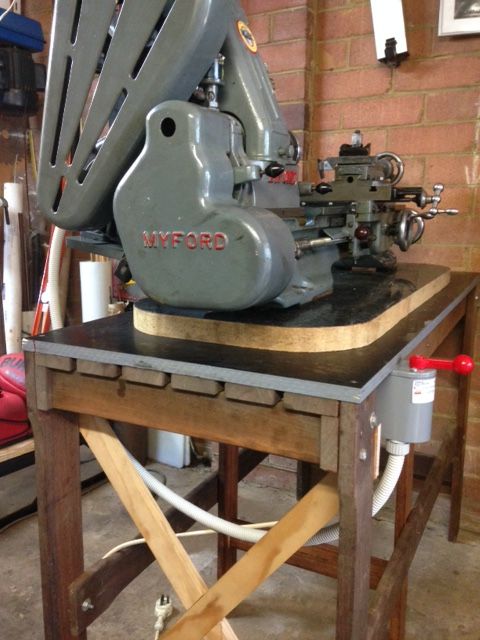Posted by David T on 17/01/2018 09:25:44:
Morning all, thank you for your replies.
I am comfortable (happy, even) doing a bit of woodwork, so I can knock up a stand-alone bench if need be. I am trying to decide whether the cost of materials + the time required is worth it versus a store bought bench that's ready to go.
Naturally any bench will have to allow the lathe to be levelled and / or shimmed. My present bench is just over 3' high which is a comfortable height for me. I expect any bench I bought would be lower, so I'd need to use raising blocks anyway. Unfortunately I only have a small hatchback for transport, so any option I take either has to be delivered or dismantled / flatpacked.
On the other hand, I could just buy a bigger, floor-standing lathe………
Without teaching my granny etc; I hope that you realise you can only properly set up a Myford if you have a stable base to level the lathe to. Because timber is a dynamic material, and moves with weather, heat, humidity, natural ongoing seasoning of the wood etc, it is not necessarily a static base to work with.
You could level the lathe so it turns parallel one week, and the weather etc effect on a timber base totally throw that out the next week.
It's a chance you need to be prepared to take if you go with a timber base.
All of the six Myfords I have owned have sat on the steel factory cabinets, and I have always levelled the stand first, then fitted the lathe to that base.
Setting up a Myford is not just 'levelling' it in the context of the base being in the horizontal plane, or the lathe itself the same, it has to incorporate a parallel turning test, which is well documented.
For all intents and purposes setting it up to turn parallel will quite possibly involve the adjusters twisting the lathe bed, if the bench goes with the adjustments, it will never achieve the aim of turning parallel, or for that matter necessarily staying that way.
Niels Abildgaard.





